THE SHOW
Basically, there were three parts of their show: the opening act, the modern casual wears, and then the avant-garde collection. Everything went smoothly and by the reactions of the audience, it is safe to say that what they've shown was extraordinary.
The Opening Act:
The opening act was a perfect mood setter for whatever it is that they prepared for the viewers. The breathtaking view of the Queen parading with two servants and two guards, with the colorful and majestic traditional royalty hanboks of Korea.
And then followed by an important announcement, "The King has arrived!," spoken in Korean language. This is another eye catcher, the servant in costume, the beautiful Korean flag being waved, plus the words spoken.
Then the King has arrived (not to mention the crowd giggling and shrieking at the sight of the handsome King)...
The King, dressed in a royal blue hanbok and would seem to be imposing his power, just like the king in Korea is respected. The audience appears to be awestruck.
And the story went on. He meets the Queen, orders everyone out. The Queen confronts the King about personal issues, and just then, a servant reappears to give both of them a cup of tea... the other poisoned. The Queen collapses and then dies. The King approaches the servant, and to everyone's surprise, kisses the servant. Gasps and mixed reactions from the audience are heard. End of story. Betrayal, death, much like the elements in a typical Korean drama. Beautiful. Creative. They just hooked the audience in that instance.



The Casual Wear
To give the spectators a glimpse of Korea now and then, a timeline of their casual fashionable wears were presented.






The Avant-Garde Collection
An Avant-Garde Collection is a very creative idea of presenting Korea to the people. It is out-of-the-box and very playful. The association of the Korean national symbols to the designed Avant-Garde clothing wows the audience. They are indeed beautiful. A two-thumbs-up.
KIMCHI
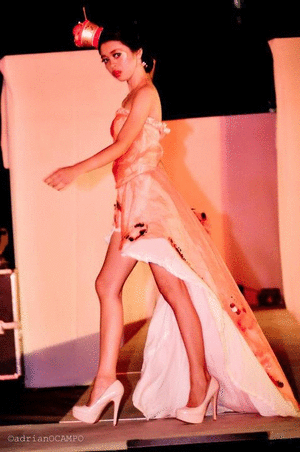
Sexy and Stoic.
This orange-colored dress flawlessly cut, exuding an exquisite flowy impression represents Korea’s best known food that is - - kimchi. Made from sheer fabric, topped with sequin embellishments, and braided details, the dress is carefully designed and specifically made; the elegant trail was even hand sewn to capture the rich and fiery nature of Kimchi. Kimchi has become the quintessential symbol of Korean culture and despite having a reputation for being spicy, most people usually develop a taste for it.
NATIONAL FLAG
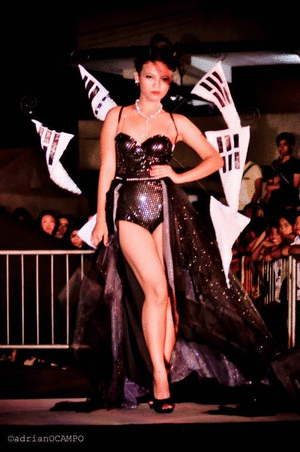
This outfit is inspired by South Korea's National Flag, Taegeukgi, aiming to showcase its simplicity and fierceness. It is made of carefully chosen fabrics accented with the flag's red and blue taegeuk and the four black trigrams. The flag could be traced back into Chinese origins hence the eum and yang in the center describing perfect harmony, like that of China's yin and yang.
The white background symbolizes the cleanliness of the people, while the Taegeuk - geon, ri, gam, and gon - represent the sky, sun, moon and earth, respectively. Altogether, they represent a continuous movement within infinity.
TRADITIONAL MASK
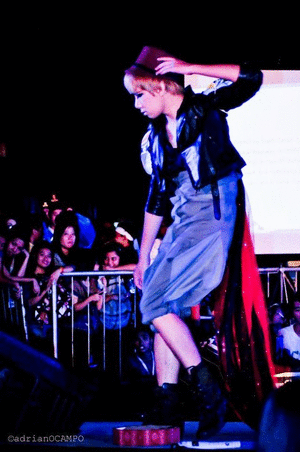
This outfit is inspired by Korea's traditional mask which is one of their national cultural assets. The top is made of leather representing stability having red and black trail representing passion and death. This is accentuated by traditional masks on both shoulders. Masks are traditionally used in wars in both soldiers and horses, and in burial rites and for driving away evil spirits. Today, masks are used as souvenirs, ornaments or keychains, but it will forever be Korea's national treasure.
JOGAKBO
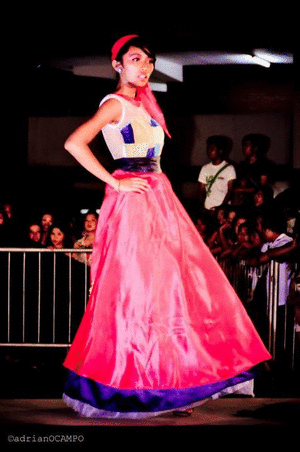
This outstanding creation is inspired by the Korean traditional patchwork called Jogakbo. The beauty of the patchwork comes with the expression of refined handcraft and sincerity. This beautifully crafted piece is made from small pieces of cloth like cotton and silk, its skirt made from quality satin. Jogakbos express the Korean women’s sense of beauty and creativity. By mixing and matching small pieces of different shapes and sizes of cloth, Korean women created Jogakbo for their daily practical uses like house decorations and wrapping purposes.
HIBISCUS
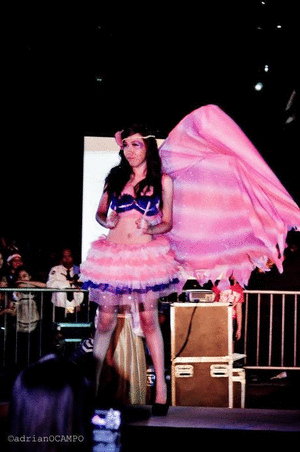
Bathed in bright hues of purple and pink, this perfect little pair of tube top and tutu skirt embodies the national flower of Korea that is - - mugunghwa or commonly known as gumamela. Intricately designed and executed, the multiple layers and lovely details from top to bottom signify the natural allure of the flower. The whopping and equally animated drape at the back, however, showcases the innate delicateness of mugunghwa. In Korean, mugunghwa means “immortal flower.” The flower’s tenaciousness, seen it’s ability to survive even insect attacks, makes it an appropriate symbol for country that has fought throughout history for it’s very existence.
TIGER
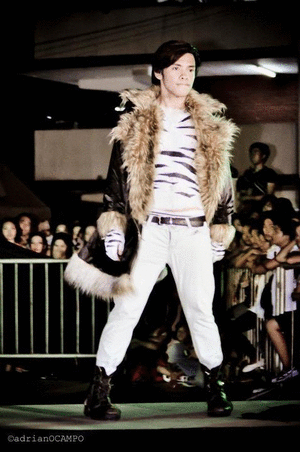
This outfit is inspired by Korea’s National Animal, the Amur (Siberian) Tiger. The coat is covered in fur that resembles that of the fierce animal while the body is embellished with its characteristic stripes. The Siberian tiger is reddish-rusty or rusty-yellow in colour, with narrow black transverse stripes. In Korean history and culture, a tiger is regarded as a guardian that drives away evil spirit and a sacred creature that brings good luck – the symbol of courage and absolute power. The sacredness of the tiger was also utilized for holding rituals that pray for rain.
KOREAN MAGPIE
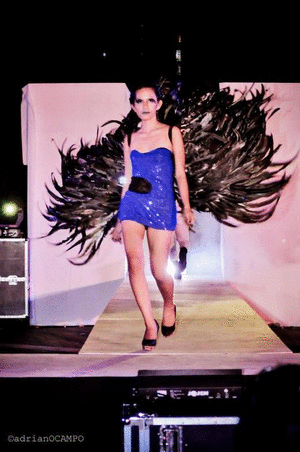
This extravagantly made creation is inspired by Korea’s State Bird, "ggachee" or the Korean Magpie. The colorful character of Korean magpie is truly a delight to observe; unpredictable, high-spirited and expressive. This magnificently designed piece is made from beautifully embedded blue sequins mini dress, carefully tailored lace in the right side. The feathers of the wings similar with the Magpie’s, show strong purplish-blue iridescence with few of green hues. Korean Magpie is a common symbol of the Korean identity, and has been adopted as the "official bird" of numerous South Korean cities, counties and provinces.
And lastly, their lovely professor, Ms. Lailanie Teves...
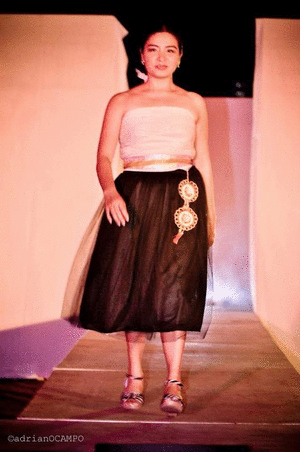
Dressed in a simple outfit, emphasizing her effortless beauty and the youthful glow of her face. Like every year, she has been a stunner, wowing the crowd with her looks.
Truly, South Korea is a magnificent country with a marvelous culture. We'll see the fruit of BJ 3-1D's labors on the 26th of March. The announcement of winners will be on the prestigious Sikat Awards. We'll keep you posted! Kamsahamnida, Phrontites! ^_^*

















0 comments:
Post a Comment